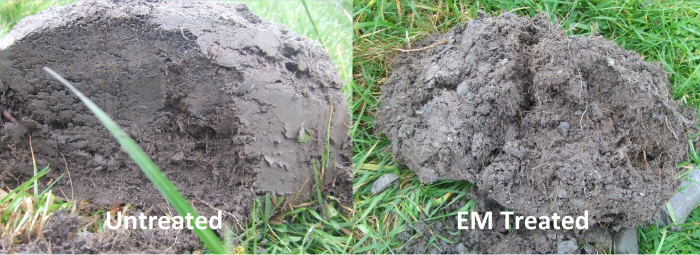Coming out of winter and into spring here in NZ, there is a real threat of pugged and compacted soils. High stock densities, especially over winter on feed crops combined with prolonged rainfall leave soils vulnerable to pugging and compaction. Pugging and compaction reduce the soils volume; this reduction lowers soil productivity and environmental quality. But an even more detrimental effect is happening below the ground in the diverse soil food web.
The soil food web is the biological make-up of the soil. An incredible diversity of organisms makes up the soil food web, which range in size from tiny bacteria, algae, fungi, and protozoa, to the more complex nematodes and micro-arthropods, to the visible earthworms and insects. In compacted soils the larger organisms cannot survive – they cannot move through it in search of food because the tunnels and burrows that make up the highways within the soil have been destroyed. Another effect is that oxygen cannot freely move around in the soil, which can create an anaerobic environment. After a period of time under these anaerobic conditions, the only soil food web organisms left are the bacteria and opportunistic fungi and protozoa, that are so small in size they are able to move through even a compacted soil.
Anaerobic bacteria thrive in compacted soils as oxygen levels are severely reduced. Negative anaerobic microbe’s produce metabolites that can kill plant roots. Plant roots also have trouble moving compacted soils and since they can no longer rely on their interactions with symbiotic microbes in the soil to bring back nutrients and waters they are highly stressed. The food web now changes from a balanced healthy system, to one with limited beneficial microorganisms and dominated by harmful elements and negative microbes. This situation can be very difficult to reverse and can severely reduce the future productivity of that soil.
Solutions to a compacted anaerobic soil include:
Soil aeration
Mechanical Aeration will alleviate this type compaction by breaking up the compacted crust on the surface which should allow in oxygen, more water infiltration and improve forage growth. Aerator machines are tractor-drawn making a narrow slit in the soil, a roller with many spikes making indentations in the soil, or prongs which function like a mini subsoiler. This will break up the crust but also requires heavy machinery to be driven over compacted ground. In addition if you don’t have the proper soil food web organisms to improve compacted soils the benefit of aeration will be short-lived.
Microbial stimulation
Applying target microbial inoculants and food sources help to return the organisms that are needed to build and maintain soil structures and a health soil food web. EM will work to correct the cause of compaction by opening up the soil and allowing oxygen to return. It will also support the growth of other beneficial organisms like mychorrizae, worms, and insects, bringing nature back into balance. EM will produce lots of polysaccharides - glues that hold the soil together and hold in moisture, improving drought resistance. EM will help increase aggregate stability; improved stability reduces soil erosion and run-off.
A recent farmer led comparison trial on the West Coast, showed EM’s ability to reduce soil compaction. The below image shows the comparison of the EM treated and untreated areas of the paddock, clearly showing that EM has reduced the soil compaction issue.

Source link














